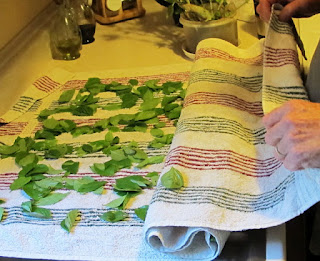Garden enemy number one. Is it cutworms? Or slugs? This could be a tough decision, but this year the cutworms are definitely on top of the list. Slugs do a lot of damage including chomping so many holes in leaves that the leaves begin to resemble lace. Cutworms chop a plant right off at soil level, and that's it, the plant is done.
I had started cabbage, broccoli and Brussels sprouts seeds in cold frames for transplanting into designated garden spots. As soon as they came up ...
Chomp.
Chomp.
Chomp.
Chomp.
Chomp. Gone. All of 'em gone. I brought home some pepper seedlings and planted them in a composted plot. Next morning: a pepper plant laying on the ground. The following morning: another.
And so I went into panic mode. What to do? Where to find the weapon to confront garden enemy number one? After some deep pondering and soul searching, I decided to google this problem. I typed "cutworms" into the search field.
One suggestion called for Dixie cups. I got some Dixie cups, cut the bottoms out of them, and put them around the seedlings and young plants, pushing them a couple of inches below the soil. This worked. None of the stems were chomped.
The University of Minnesota Extension Service offers the information that cutworms are the larvae of several species of night flying moths in the Noctuidae family. The term ‘cutworm’ comes from the fact that they cut down young plants as they feed on stems at or below the soil surface. Cutworms attack a wide range of plants including tomatoes, peppers, broccoli, and cabbage. They are active at night, and spend days in the soil, so you may never see them.
It seems that low-growing plants are a destination for native moths to lay their eggs. Many weeds fit this description, and weeds left in the garden in fall to overwinter may harbor hundreds of these eggs. Non-native, or Migrating moths mate and lay eggs from early spring to late summer.
Control of cutworms is said to begin with removing all plants from the garden beds in the fall after harvest. This is followed by tilling the garden beds. This helps to expose, and hopefully destroy over-wintering larvae. Repeating the tilling in the spring is recommended to further this process.
And then, in case you haven’t gotten all of the cutworms, here are some more remedies found in the Google search. We will certainly be trying most of these in the spring.
*In the evening, spray a mixture of insecticidal soap and water around the plants. As the cutworms appear, hand pick them off and dispose of them. You can use a coffee can to put them in and cover it with the lid.
*Spread cornmeal around the plants. Cornmeal is a tasty treat for cutworms, but deadly. They can't digest it but cannot resist it. They overeat the cornmeal and die.
*Set chickens loose in the garden in the fall. Apparently, Chickens find cutworm eggs and larvae quite tasty. This won’t work in spring when the plants are just beginning to sprout. The chickens would also eat the plants.
*Diatomaceous earth spread around the plants is another suggestion, but it must be reapplied after a rain. The sharp bits cut the cutworms when they crawl over it, causing them to dehydrate and die. Cutting the cutworms sounds like a fitting end for garden enemy number one.
Regardless of any of these remedies, spring transplanting will include Dixie cups around the seedlings. A gardening friend offers another, similar remedy. She pushes an ordinary nail into the ground alongside the stem of the plant. We've tried this too, and it seems to work.
We are hoping to see no cutworm damage ... at all ... in our 2013 garden. I'm putting some red wine into one of my Dixie cups to drink to this. Cheers! -G.H.






